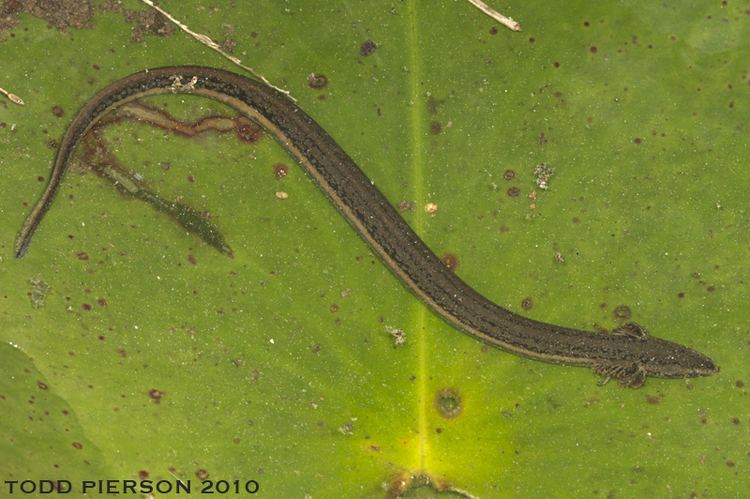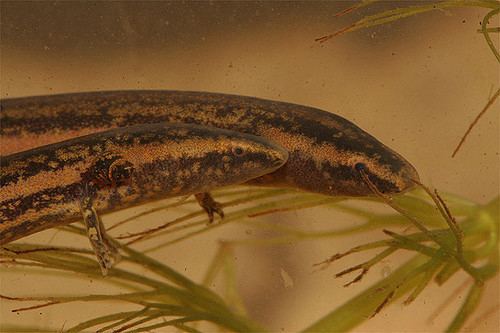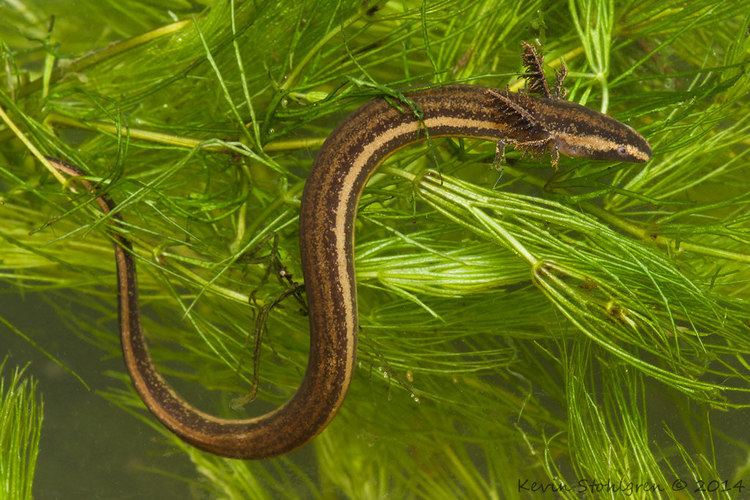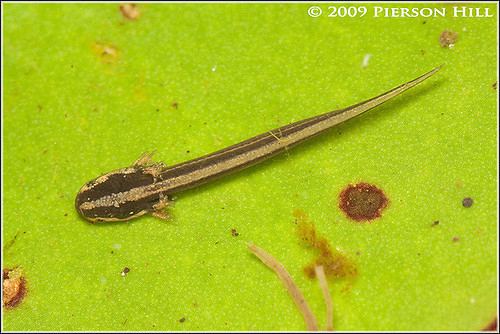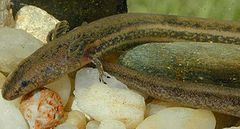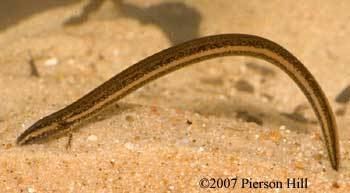Kingdom Animalia Subclass Lissamphibia Suborder Sirenoidea Scientific name Pseudobranchus striatus Rank Species | Phylum Chordata Order Caudata Family Sirenidae Higher classification Dwarf siren | |
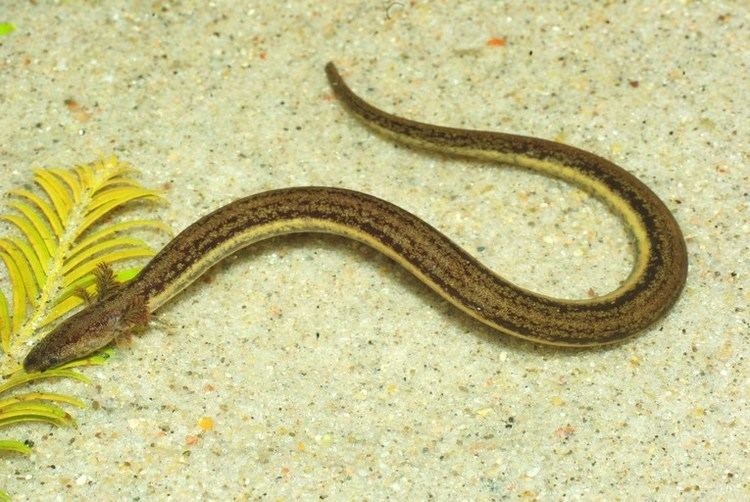 | ||
Similar Dwarf siren, Salamander, Amphibians, Southern dwarf siren, Siren | ||
The northern dwarf siren (Pseudobranchus striatus) is a perennibranch salamander lacking hind legs. Found in the Southeastern United States, it one of two currently recognized species of dwarf sirens. Three subspecies are currently recognized; P. s. striatus, the broad-striped dwarf siren, P. s. lustricolus, the Gulf Hammock dwarf siren, and P. s. spheniscus, the slender dwarf siren.
Contents
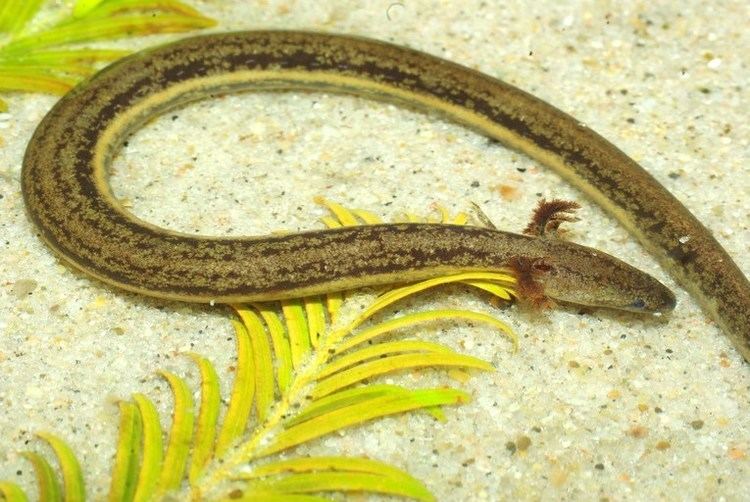
Description
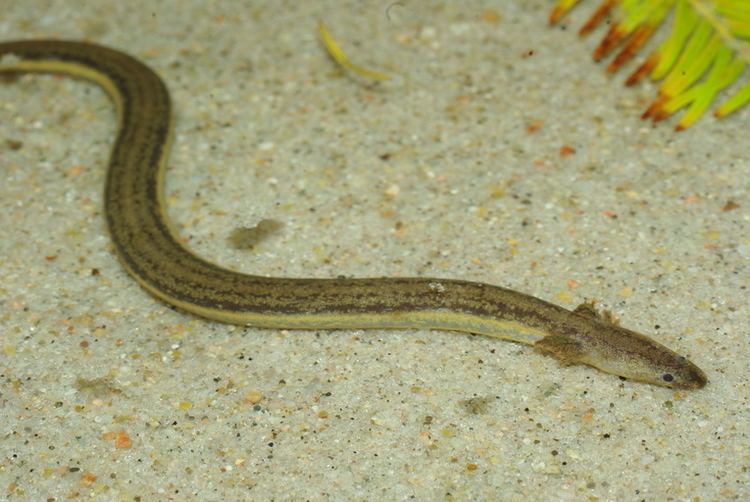
The northern dwarf siren is the smallest siren known, at only 4.0–9.9 in (10–25 cm). Like other members of the Sirenidae, the northern dwarf siren is aquatic and gilled throughout its life. Being slender and almost eel-like, it is noticeable because of the light stripes on its side compared to the brown or light-grey dorsum. The siren has only one gill slit, a finned tail (tip compressed), costal grooves, and three toes on each of the two front feet. They are very secretive and dwell among water hyacinth roots and amid debris at pond bottoms. They feed on tiny invertebrates, and during droughts, encase themselves in mud beneath the pond bottom. When handled or caught, they make faint yelping noises.
Breeding
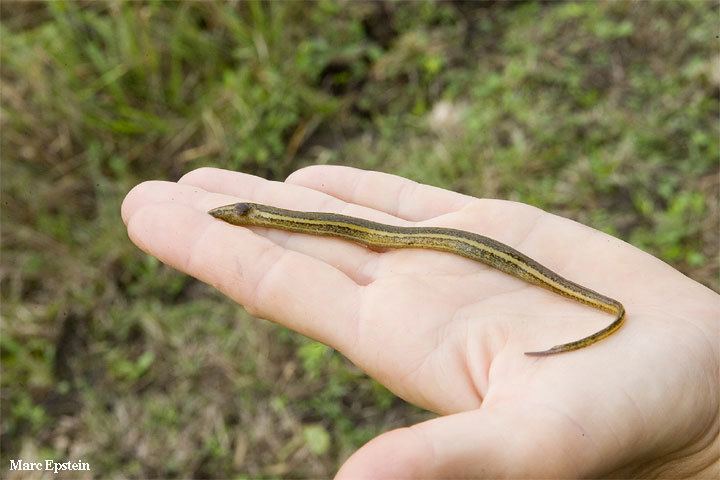
Northern dwarf sirens breed in the spring and gather in large numbers at the pond or spring where they were born. Male and female sirens can not be determined through external examination. The sirens fertilize externally and lay a large number of membrane-enclosed eggs. The eggs are laid singly on roots of aquatic plants, and the larvae hatch about a month after they have been laid at about 0.6 in (14 mm).
Habitat and range
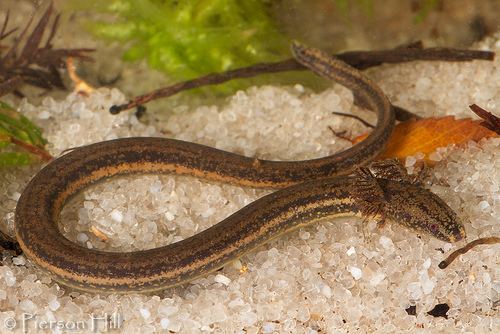
This particular siren tends to live in shallow ditches, cypress swamps, and weed-choked ponds on the coastal plains of South Carolina, Georgia, and Florida.
Subspecies
